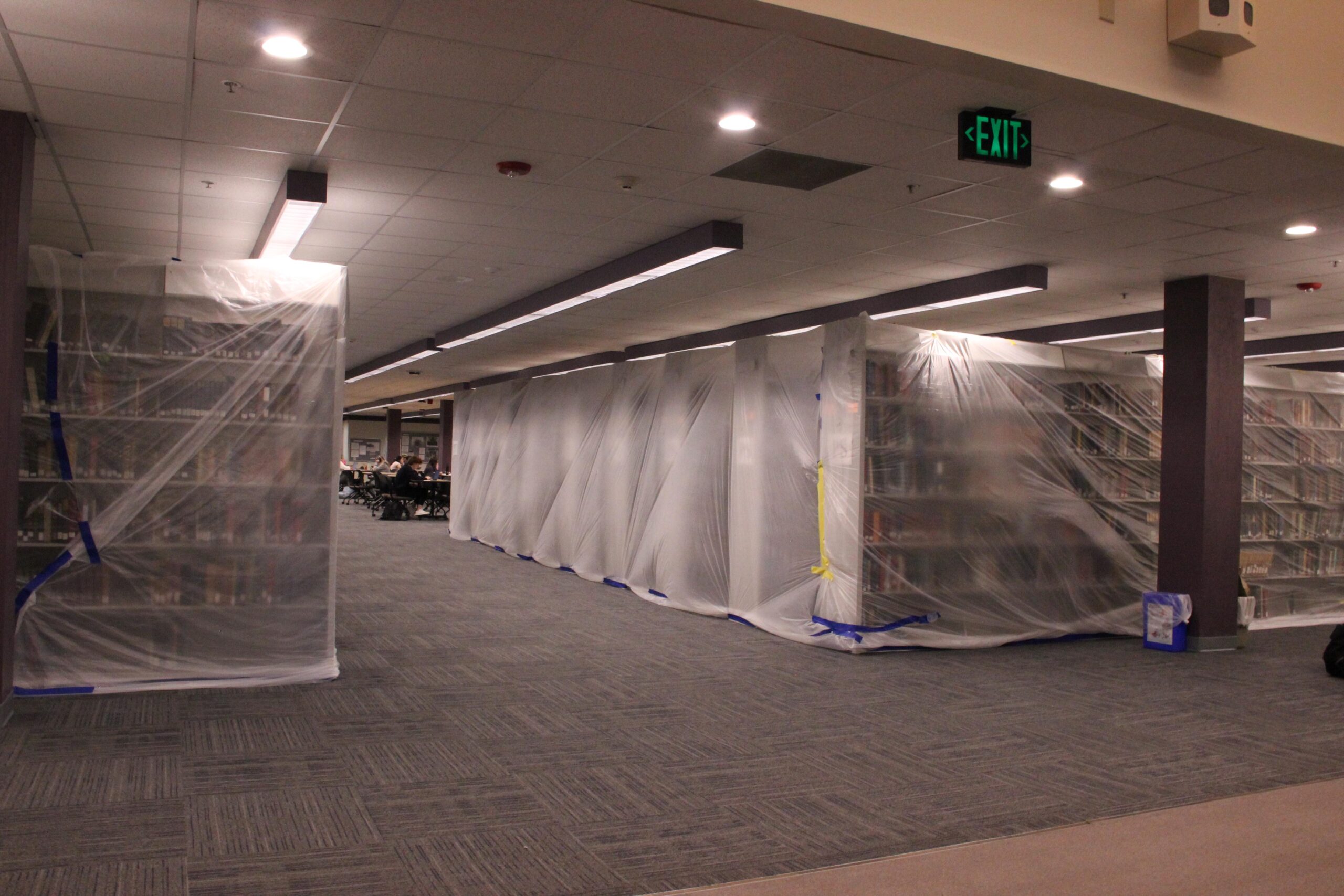Mold that has spread throughout the Robert L. Carothers Library and Learning Commons and the University of Rhode Island is generating solutions for its removal.
DAI General Contracting and safety and risk management has taken precautionary measures around the impacted areas of the library, such as covering the infected bookshelves, evaluating the ventilation systems and placing air scrubber units around the library.
Processes to remove the mold initially started when it was discovered on the lower level of the library around two months ago, according to Karl Calvo, the assistant vice president of facilities at URI. Soon after, the other floors were searched and the third floor of the library was found to be infected.
On the lower level, library staff found a limited amount of black mold, which meant those materials had to be discarded, according to Calvo.
When the situation on the third floor was assessed by an environmental remediation contractor and risk management, no black mold was found, according to Brian Gallagher, head of access services for the library. Materials used by the English department, languages, history and the social sciences, however, were found to be affected by the mold – prompting serious implications for accessibility.
“The library has always been there to be a resource for faculty, they know if they don’t have something they can go to their friendly neighborhood library and get that material in just a second,” Gallagher said. “Right now that second has turned into probably an entire academic year.”
Immediately after discovering the mold, URI hired an environmental remediation contractor, DAI, to help assess the situation, according to Gallagher. Once DAI was hired, air scrubbers were placed around the library in order to help bring the air quality back to a healthy level.
“We did a per risk management and put up signs saying ‘could you not come up on the floor while the air scrubbers are going so we can bring it down to a good level for you?’” Gallagher said. “Our first concern was for the students.”
Multiple s afety measures were put in place, including covering the infected bookshelves in a large amount of plastic wrap and placing air scrubbers throughout the floor to blow and circulate the air, Calvo said. The air quality on both the lower level and third floor has since been tested and marked as acceptable.
The heavy mold buildup likely started due to problems with the library’s ventilation system, according to Calvo.
“The air is too humid in the summertime and the heating and ventilation system in the library is probably about 30 to 40 years old and it needs a lot of love and attention,” Calvo said. “We continuously fix it and maintain it but it’s not set up to dehumidify all the air, so that’s kind of a contributing factor to why some of the mold grows in those spaces.”
While some of these materials can be accessed online, many limitations and barriers still lie in the road, Gallagher said. The library’s staff can still order books upon request, but availability and affordability still need to be factored in.
Most of the mold that has been found on the books is white mold, according to Gallagher.
While mold is found almost everywhere indoors and outdoors and is not always harmful, there are specific types that pose serious health risks, according to an article from Jenkins Environmental . Some symptoms of black mold exposure are the same as those of white mold, like anxiety and memory loss, while other symptoms include seizures, pulmonary edema and aggression.
URI is unable to clean and replace all of the damaged materials, as the institution has a budget for money that can be spent, Gallager said.
Working with a contractor on an issue such as mold infestation is not a one-step process, according to Gallagher. Remediation of the third floor will be lengthy.
DAI, being a third-party contractor hired by URI, cannot proceed with the cleaning until they get a purchasing order, so they have funding to go and start cleaning the materials on the shelves, Gallagher said.
Now that the impacted books are covered by the wrap it is deemed as safe for students because the mold is not spreading and circulating as much, according to Gallagher. DAI is constantly in need, not just at URI but other universities, meaning there is likely an overlap between their projects.
“DAI is a go-to company because they’ve worked at Brown, they’ve worked at Harvard [and] they’ve worked at Providence College dealing with mold issues,” Gallagher said. “Facilities have been looking at what [they can] do to cut this down – because this is not a one-off thing for just this library, this happens at a lot of libraries.”
More information regarding the affected materials can be found at the Circulation & Borrowing section of URI’s website.





